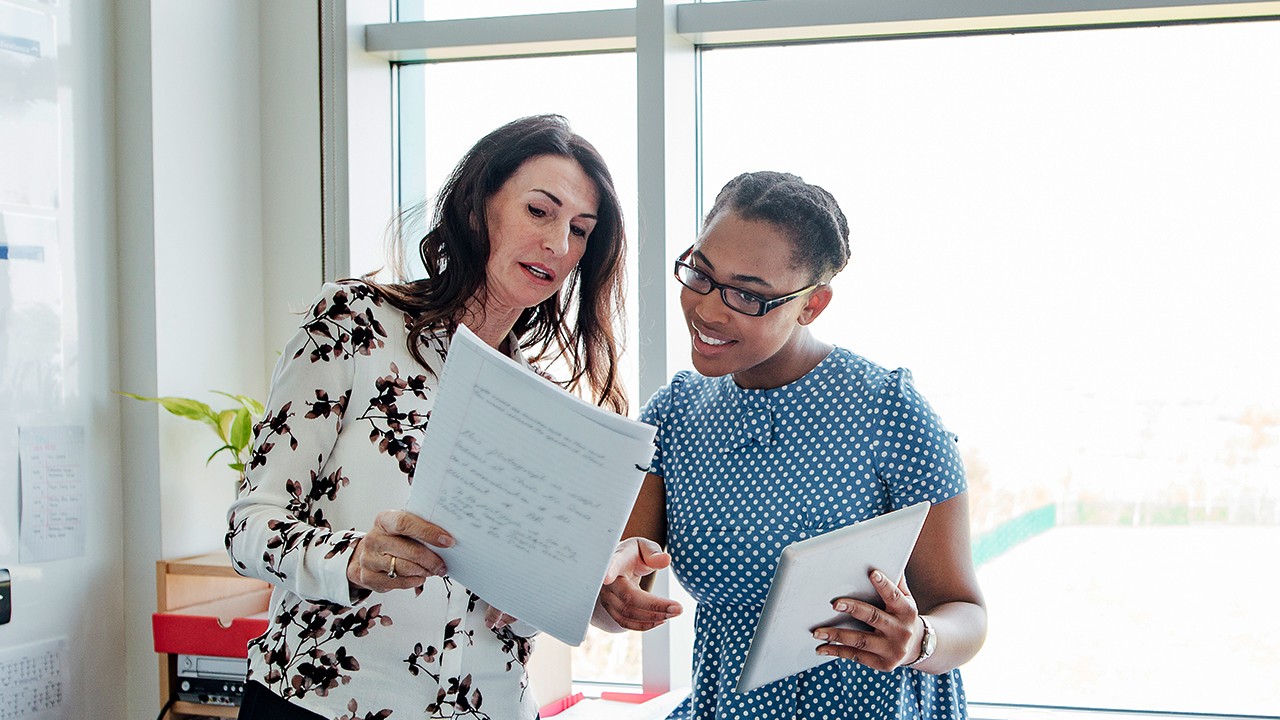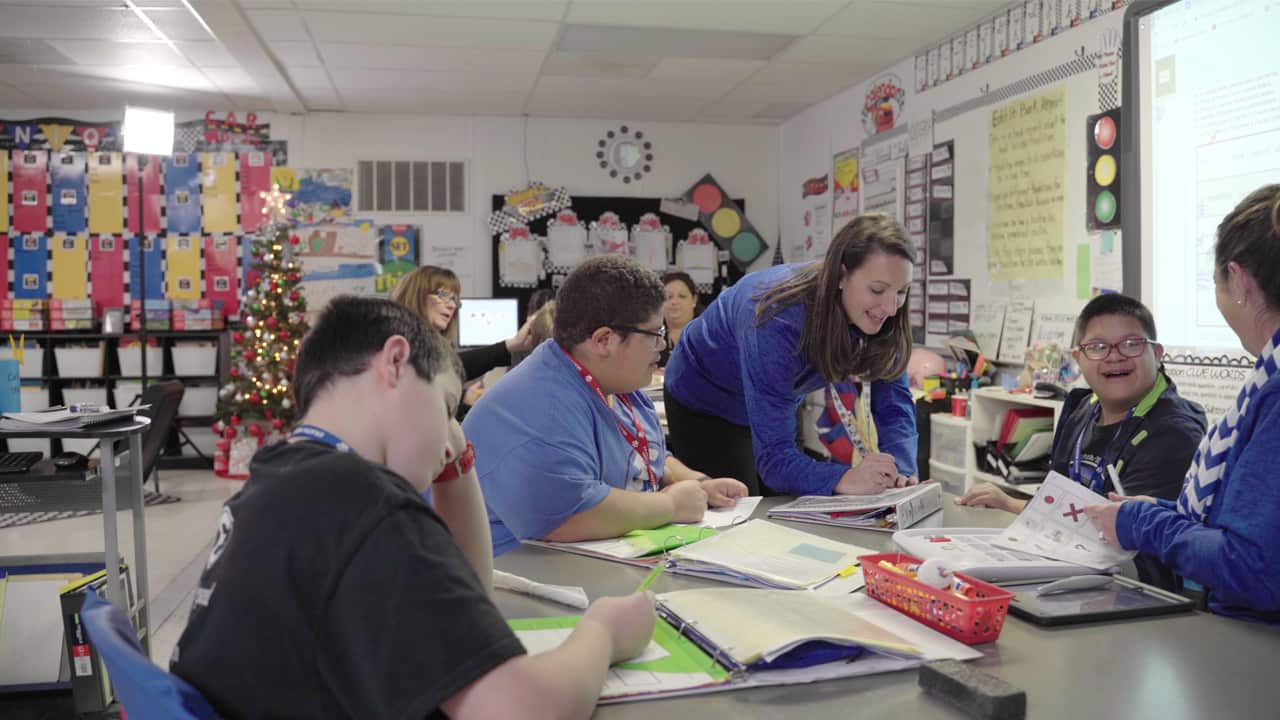Building a Relationship
Let’s face it, we’re going to be seeing and spending more time with our paras than with our own family some weeks! It’s crucial that we build a positive, collaborative relationship with them so we can work together to the best of our abilities and, of course, so our students will benefit from this! Our students pick up on a lot more than we give them credit for, so we must model good relationships for them and maintain a comfortable atmosphere in the classroom. Here are some ways to foster a strong working relationship with your paras.
Communication

Paras are some of the most caring and loving people I’ve met—they want nothing more than to help us and our students! It’s important to communicate vital information to your paras so they can be of more assistance in your room.
Make sure your assistants have access to the key goals the student is working on and appropriate accommodations and modifications. Schedule time to discuss this critical information with them and include them in your planning, so that they understand what you are doing with students, how to manage/address certain behaviors and struggles and what they can do to help.
You may also find it helpful to make a checklist for paras to refer to in your classroom. You can assign paras different tasks to do each day to remove some stress from yourself, such as resetting schedules, checking student folders, wiping off desks, putting chairs up, setting up/resetting materials, etc. The checklist can be kept in a paraprofessional binder that includes other helpful and important information such as break times, schedules, emergency information and more.
Shared Responsibilities

We have a lot of work and responsibilities each day, but we don’t have to do it alone! Engaging paras in the teaching process allows us to maximize instruction time with students, whether one on one or in a group.
Provide paras with supplemental work that you want them to do with students and teach them how to present it to your students. Your paras can write important notes on work such as prompt levels and observations, which will be helpful for you to see when you check student work.
You can even teach your paras how to track data for behavioral and academic goals. You’ll want to make sure you thoroughly explain how data is to be measured and collected. You should also check in with them often to ensure it’s still being measured with fidelity.
Respect

Choosing to work in the field of special education likely means that you’re a passionate person, and sometimes this passion may come across in unintended ways when working with your paras, especially in intense situations. It’s important to remember the reason we’re all at school each day: for the students! We all want the best for students, and we can’t give them that if we aren’t striving to be our best too. Additionally, we can’t expect students to respect others if we aren’t modeling it ourselves. If situations arise and emotions come up, we must separate this from the classroom and be able to handle it respectfully as adults outside of school hours.
For example, I make a point to check in with my paras at the beginning and the end of each day. I ask them how they are, give them important information about the day and may touch base about sensitive classroom information, such as students who have been having challenging behaviors. This gives paras a chance to feel involved and have an uninterrupted dialogue with me.
There have been times when I had to step in to correct what a para was doing, and I might have come across as mad or harsh to them, which upset them in an already stressful situation. Leaving this unaddressed until the end of the day could cause the para to take a negative tone when interacting with students and other educators. When a situation like this occurs, I make sure to apologize and check back in with them throughout the day. This way I’m admitting fault, explaining my feelings and acknowledging theirs. This also allows the para to feel more at ease while still working with students. We can then talk in a more personal manner at the end of the day.
If I don’t agree with how a para is handling certain students or situations, I use general terms in conversation with them and point out that even I don’t do everything perfectly all the time. For example, instead of saying, “You’re giving Tim too many warnings before giving them a mark on their behavior chart,” I would say, “I’ve been thinking about Tim’s behaviors, and I think he’s getting too many warnings before giving him a consequence. I’ve done this too. Let’s really focus on this today.”
Embracing Other Viewpoints

Your paraprofessionals have amazing insights and ideas to offer. It’s important to give them the opportunity to share these with you. And make sure you embrace paras’ help and their willingness to contribute in different situations!
Because paras may see things differently, I always allow them to step into lessons to share their own points of view or stories that can help explain the material. If your para is offering ideas, suggestions or insights, take the time to really listen to them with an open mind. Many times my own paras have provided useful information that ended up helping students.
For example, one time I was over-complicating a behavior chart for a student. My para said they had an idea, so I allowed them to develop a new behavior chart, and we used it the remainder of the time I had the student because it worked so well. My paras have also created instructional materials that proved to be useful and successful, such as a maze that displayed kinetic and potential energy, a map of our field trips to go along with a unit on maps and a classroom Olympic event while learning about the Olympics.
In addition, it can be helpful when paras pick up on things we may miss during class, such as when students are not paying attention, are exhibiting undesired behaviors or are deliberately doing something when we’re not looking. Our students stand to benefit the most when we and our paras work well as a team. They can focus more on learning from the instruction and modeling we’re giving, which will form a strong foundation of academic and life skills as they eventually transition and take their places in society.


